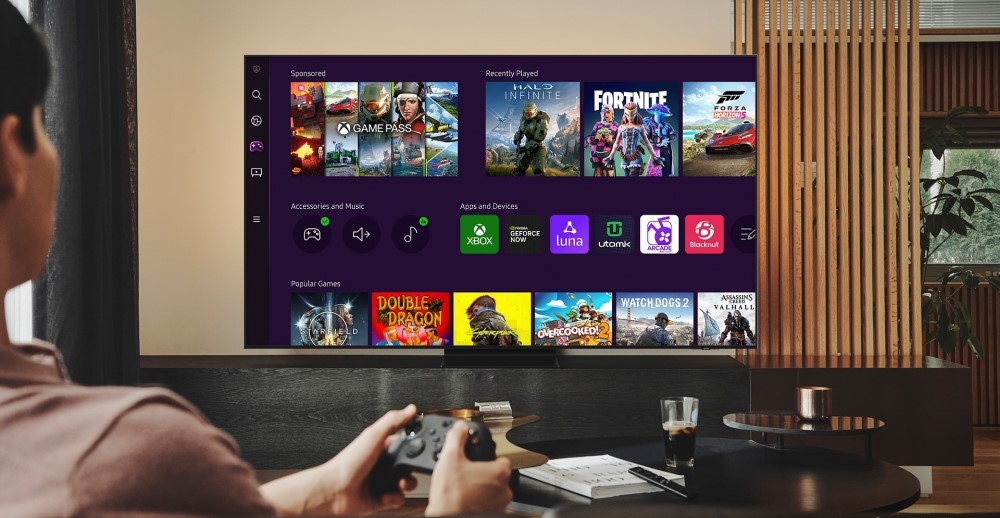 Imagine going online to buy an album. When you visit the store, you’re told you can’t by the whole album at once, or at least not for a few months. Instead, your local radio station will be playing one song from the album each week, along with 500 other songs, most of which you will absolutely no interest in. You won’t be able to hear that song for about a week after it’s played in the US, and if you miss it you might be able to stream the song on a music catch up service online, before it’s taken down again.
Imagine going online to buy an album. When you visit the store, you’re told you can’t by the whole album at once, or at least not for a few months. Instead, your local radio station will be playing one song from the album each week, along with 500 other songs, most of which you will absolutely no interest in. You won’t be able to hear that song for about a week after it’s played in the US, and if you miss it you might be able to stream the song on a music catch up service online, before it’s taken down again.
Sounds ridiculous, doesn’t it? Yet this is pretty much how the TV industry delivers media to the consumer today. As a content distribution model, it appears to be wide open to disruption from. But, for now at least, content delivery models aren’t everything. It’s business models that count. And as things stand, TV’s business model is still delivering billions each year for the industry, which has rarely had to even flinch during the first five years of online video. And if PWC’s recent market forecast is correct, the pay TV market will see ‘minimal disruption’ over the next five too.
But five years is a long time in tech. Apple and Google fans — ‘the faithful’ — believe a messianic new TV platform will emerge from an Area 51 style lab in Cupertino or Mountain View, where the TV experience is being reinvented in ingenius and inconceivable ways. While there’s little doubt such labs exist, there’s still no evidence that they’ve been successful in creating a new TV experience. And even if they or one of the other tech companies manage to reinvent TV, they’re still going to need content, most of which remains in the hands of the industry they hope to disrupt.
So let’s put the OTT services, the new TV operating systems, and their content to the side for a moment, and look at some other aspects of the TV and video landscape for a change. Are there any other forces at work that are likely to bring TV into the 21st century? And should we be looking for a single source of disruption, or will the TV industry be facing a multi-pronged attack that it will have to fight on a variety of fronts?
VAN believes the latter outcome is more likely. Regardless of what the TV industry has up its sleeve, it’s going to be fighting so many battles over the next few years, that it’s difficult to believe the established industry players will be able to maintain their grip on audiences and advertiser budgets in the way they do today. Here are some of the areas that appear set to contribute towards that disruption:
1. Piracy — The Spotify for TV already exists. It just isn’t legal yet.
 Video piracy is just getting started. Up until now, video piracy hasn’t managed to get the kind of explosive traction that music piracy did in the Napster days. Consumers of pirated content have either had to stream a poor quality version of the movie, usually from a grotty site with pop ups offering malware and Russian wives, or download the file directly using a torrent service, which can take hours or even days for a single file to download.
Video piracy is just getting started. Up until now, video piracy hasn’t managed to get the kind of explosive traction that music piracy did in the Napster days. Consumers of pirated content have either had to stream a poor quality version of the movie, usually from a grotty site with pop ups offering malware and Russian wives, or download the file directly using a torrent service, which can take hours or even days for a single file to download.
But connected TVs are breaking new ground for the pirates. Earlier in the year VAN visited the home of Jason, who already has a Spotify-like service running on his living room screen. Using a jailbroken Apple TV, he could stream torrents directly without having to wait for them to download. If the quality wasn’t good enough, he’d switch to a higher quality version in the same amount of time it would take to change a channel. And when he was out and about, he could continue watching the same video file from the same point where he left off. Put simply, he could watch what he wanted, when and where he wanted it, and it was all free. If you marry Jason’s tech with the increasing availability of pirated live TV streaming, you have a service that’s not only free, but simply too good to fail.
The really interesting part will be seeing how the TV industry deals with the pirates. Will it waste time, money and energy playing the same game of anti-piracy whac-a-mole the music industry did, or will it focus on creating viable, competitive alternatives?
2. Gaming
Like piracy, gaming has yet to exploit its full potential in the living room. While the gaming threat is old ground for the TV industry, it might be slightly more concerned this time around due to the fact that you no longer need a console to play games — casual games and cloud-based gaming both appear likely to eat into at least some TV viewing time. Then of course consoles are becoming all encompassing multimedia platforms. Xbox users, for example, now spend more time watching TV and movies than they do playing games.
Then, looking more speculatively into the future, if we had to bet on an industry leading an entertainment revolution in the living room, gaming would be the most likely contender. While the TV industry is attempting to get people excited about 4K, the gaming industry is focusing on things like the Oculus Rift, a virtual reality headset.
While it’s early days, the project recently won funding on Kickstarter and development kits are now in the hands of leading games developers, ranging from EA to the creators of Minecraft. If this device device – or similar VR headsets – transform gaming in the way many industry experts believe they will, it seems likely that a lot more of us will be spending a lot more time gaming in immersive environments. Why go home and watch Eastenders when you could be in Middle Earth instead? In time, this might also present opportunities for TV too e.g. being able to give the viewer a sense they’re sitting at a live sports event.
3. Enter the Publishers
When we talk about ‘publishers’ online, for the most part we’re referring to a broad church of sites that up until now has mostly consisted of content based around text, links and images, with just a sprinkling of video and gaming thrown into the mix. However, with display CPMs in decline and demand for video growing, many publishers have started to take video a lot more seriously over the last year or so.
Now heavyweights like the Huffington Post and the Daily Mail are investing in TV-style production studios, and it seems likely that most will eventually develop connected TV apps to heighten their chances of TV budgets. These are large, established media brands moving into TV’s territory, and it seems unlikely their advertisers won’t be willing to follow them on to connected TV. It’s early days, but few would doubt their ability to eventually get video right.
4. Connected TV Apps
Connected TV apps look set to become the new TV channels, which will have profound consequences for pay TV. Firstly, brands will be able to put their own video assets on TV, although it remains to be seen how many brands will be able to pull this off (VAN is guessing that the answer to that question will be ‘not very many’). Publishers and startups will do the same of course, but the dark horses here are the independent content producers, who might one day find it’s viable for them to bypass the pay TV gatekeepers and go straight to the consumers.
5. Programmatic Buying
While TV continues to enjoy unrivalled scale and reach, its inventory still can’t be bought programmatically. In 2013, that’s not a huge problem for TV. But in 2014 and beyond, it might start to become one as video advertisers increasingly find they can find TV-like content, scale and reach on the exchanges. It’s going to be fascinating to see just how much brands depend on access to top tier premium video publishers, and vice versa, over the coming years.
6. The TV Industry. Disruption just might come from within.
Finally, it would be unwise to write off the TV industry based on the archaic model it uses today. The model is uses today doesn’t exist because the industry suffers from a lack of imagination or digital nous — it just happens to be the model the industry inherited, and it still pays.
There are parts — big parts — of the TV industry who really do ‘get the web’, and who have already shown they’re willing to rapidly respond and iterate their business model when it’s deemed ecessary. BSkyB are an example of one such company, who last year invested in both Zeebox and Roku, and then launched Now TV, an online TV movie streaming service, in spite of the fact that many claimed they’d cannibalise their TV offering.
Put simply, the TV industry’s fear of the Internet is dissipating. They’ve dipped their toes in with VOD services and have found they’re still alive, still making lots of money, and that their TV audiences seek them out online. Even social media — once regarded as a competitor for eyeballs — is turning out to be an unlikely ally.
If the TV industry has learned that it’s better to disrupt your own business model before someone else does, the future could be a lot brighter than digital doomsayers like to think.




